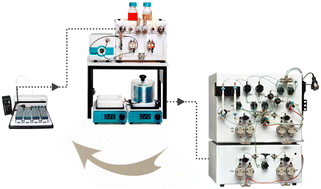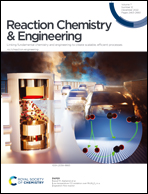Enhanced flow synthesis of small molecules by in-line integration of sequential catalysis and benchtop twin-column continuous chromatography†
Abstract
We report an improved approach for the integration of flow synthesis and continuous chromatography, for applications in the end-to-end preparation of pharmaceutically-relevant small molecules. It involves the combination of sequential microreactors and twin-column counter-current chromatography based on the often-used C18 columns. The column loading method ensures that the product breaking through a fully loaded first column is loaded onto the second one, avoiding waste of precious material and technological complexity associated with the use of four-to-six columns typical of simulated moving bed chromatography. The system was applied to synthesize biphenyl via Suzuki–Miyaura reaction, and was also demonstrated for other structurally-different compounds. Compared to the discontinuous and other traditional approaches, our method leads to higher isolated yields (ca. +60%), higher productivity (ca. +30%), and reduced solvent consumption (ca. −80%). A circularity and life-cycle analysis was also conducted to demonstrate the environmental benefits of the flow process.

- This article is part of the themed collection: Emerging Investigator Series


 Please wait while we load your content...
Please wait while we load your content...